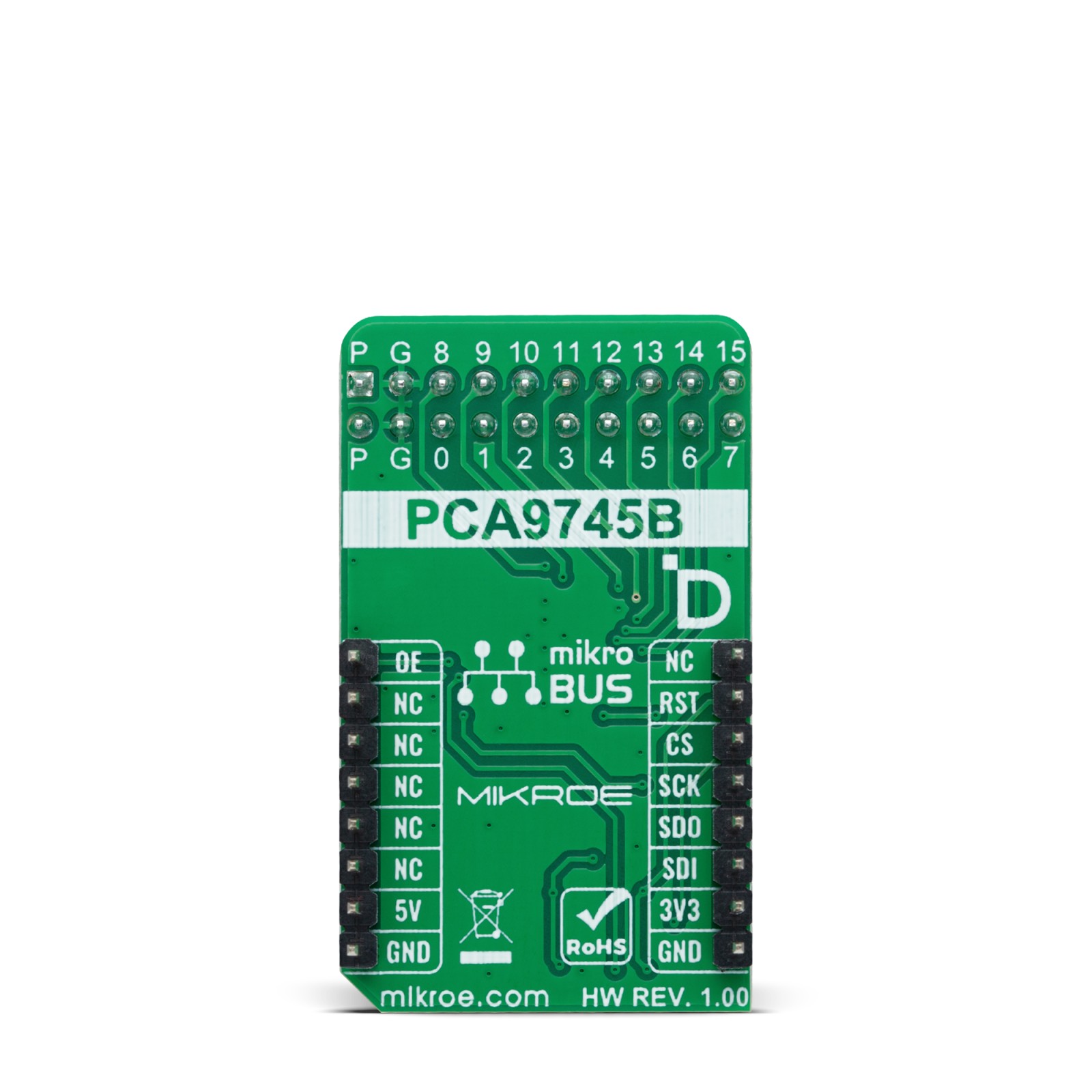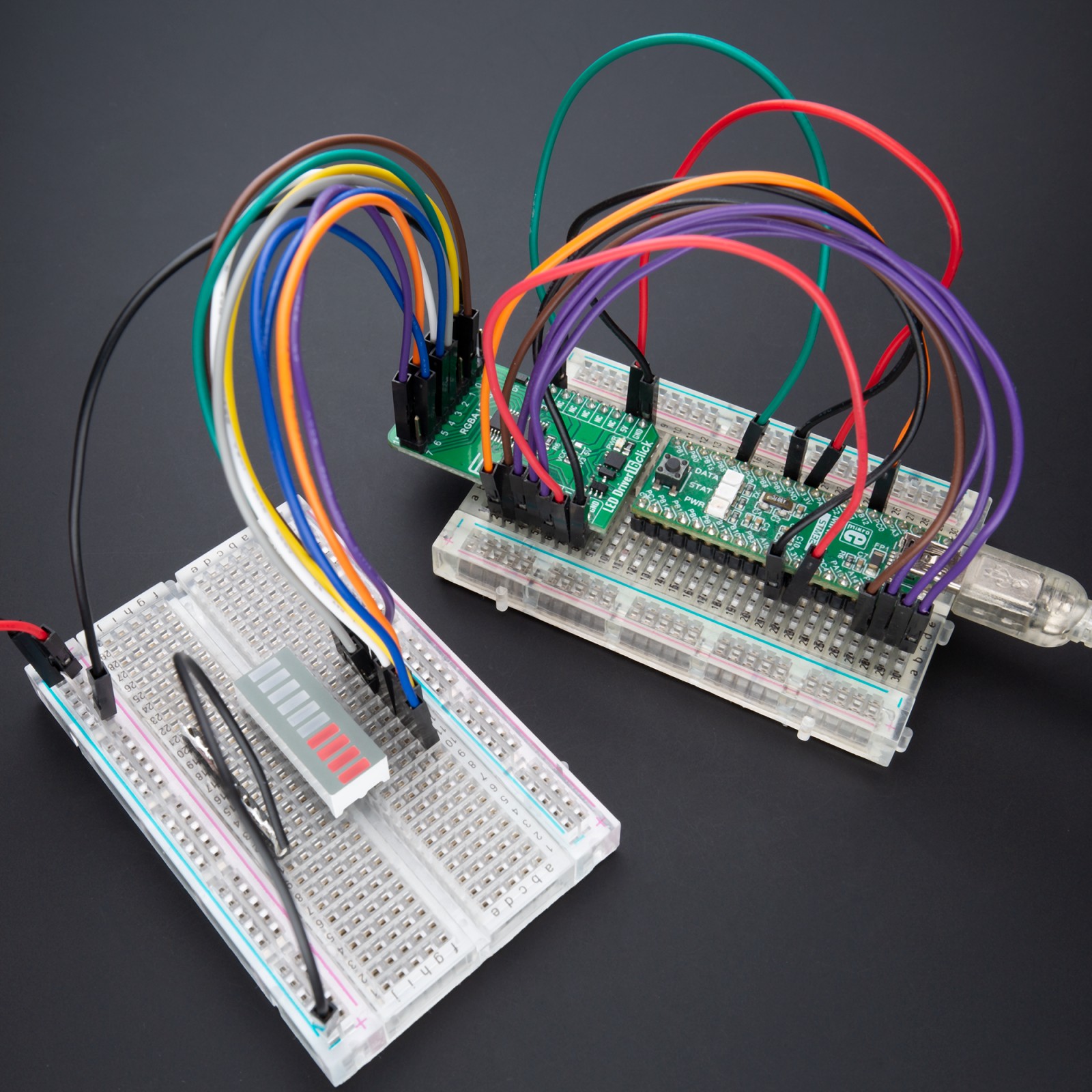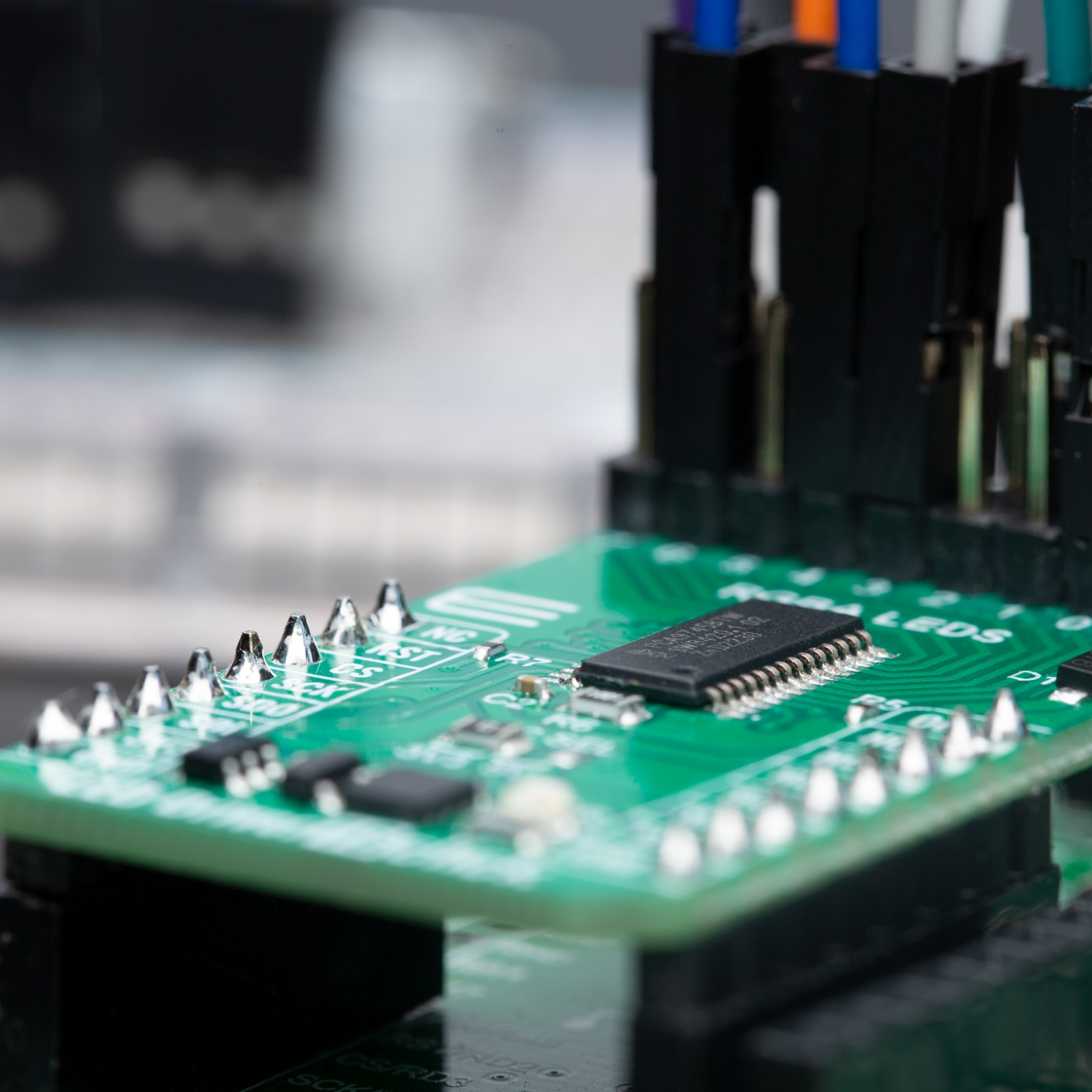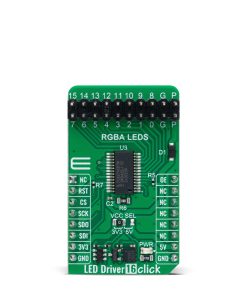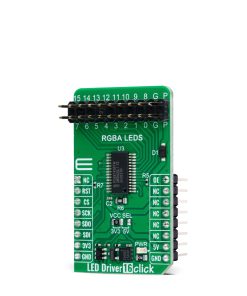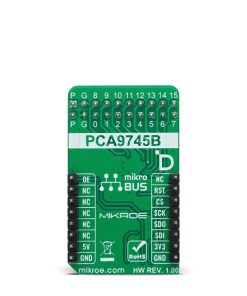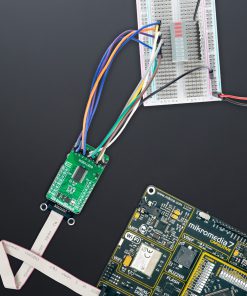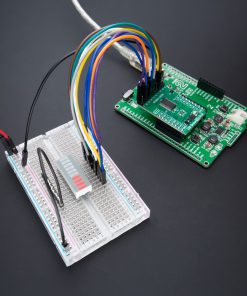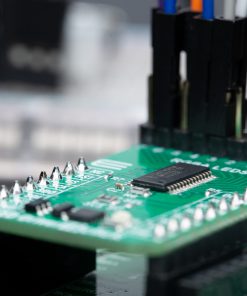LED Driver 16 Click is a compact add-on board that simplifies the control of multiple LEDs. This board features the PCA9745B, an SPI-configurable sixteen-channel constant current LED driver from NXP Semiconductors. Each LED output has an 8-bit resolution (256 steps) fixed-frequency individual PWM controller that operates at 31.25kHz with an adjustable duty cycle from 0 to 100% to allow the LED to be set to a specific brightness value. Powered through a selected mikroBUS™ power rail, either 3.3V or 5V, it provides a maximum output current of 57mA per channel and multiple built-in protection functions that protect the circuit during abnormalities. This Click board™ is optimized for dimming and blinking Red/Green/Blue/Amber (RGBA) LEDs for various consumer amusement applications, LED status signalization, and many more.
LED Driver 16 Click is fully compatible with the mikroBUS™ socket and can be used on any host system supporting the mikroBUS™ standard. It comes with the mikroSDK open-source libraries, offering unparalleled flexibility for evaluation and customization. What sets this Click board™ apart is the groundbreaking ClickID feature, enabling your host system to seamlessly and automatically detect and identify this add-on board.
 GSM/GNSS Click
1 × R1,700.00
GSM/GNSS Click
1 × R1,700.00  BUZZ Click
2 × R115.00
BUZZ Click
2 × R115.00  LPG Click
1 × R335.00
LPG Click
1 × R335.00  Proximity Click
2 × R220.00
Proximity Click
2 × R220.00  tRF Click
1 × R1,050.00
tRF Click
1 × R1,050.00  MPU 9DOF Click
1 × R550.00
MPU 9DOF Click
1 × R550.00 


